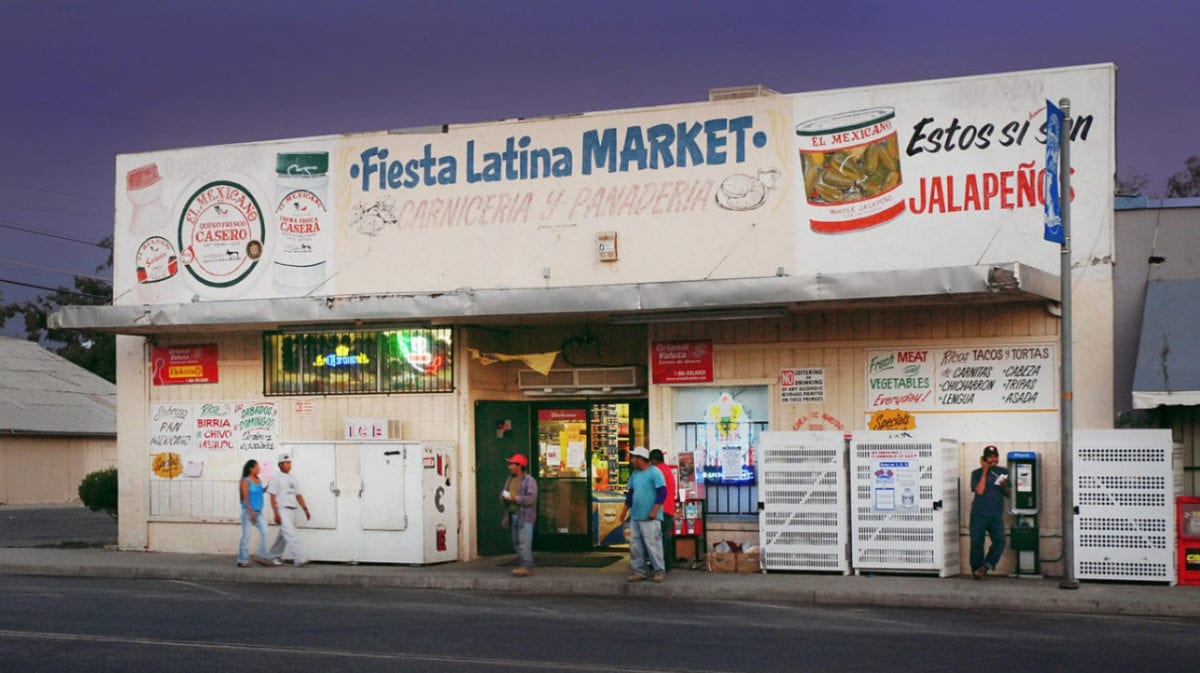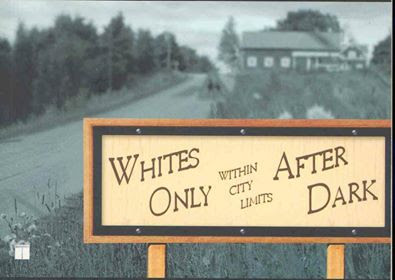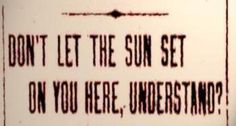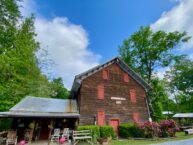By Glynn Wilson –
The city of Bessemer just west of Birmingham, Alabama, may not be the worst place to live in the country, but it’s close.
A new report ranking the 50 worst places places to live in the United States based on crime rates, poverty levels, job markets, property values and access to entertainment and cultural attractions ranked Bessemer as the sixth worst place to live in the country and the worst place to live in Alabama, a state with 5 cities in the worst 50 places to live in the nation.
6. Bessemer, Alabama with a population of 26,697, a poverty rate of 29.7 percent and a median home value off only $84,000, is plagued by a crime rate of 2,986 incidents a year, the second highest violent crime rate in the nation, trailing only Anniston in the eastern part of the state, according to the report. Bessemer also has the sixth highest property crime rate with nearly 9,800 reported property crimes per 100,000 residents.
In addition to high crime, residents face a number of economic challenges, according to the report. Nearly 30 percent of residents live in poverty, and more than one in three residents do not have easy access to something as basic as a grocery store. The typical Bessemer home earns less than $32,000 a year, well below the U.S. median annual household income of $57,652.
9. Anniston, Alabama has been named number one on this list in previous years, in part because like many cities, it is losing residents in a “brain drain” that plagues many small towns in rural areas in the state and country. In the past five years, Anniston’s population declined by 4.2 percent. Over the same period, the number of people working in the city fell by a staggering 10.9 percent. The typical household in Anniston earns just $32,070 a year.
With a population of only 22,097 residents as of 2017, the latest numbers available for this report, the poverty rate was 29.5 percent. The median home value was only $95,700, placing the city in the bottom 25 percent nationally. The city’s population decline may be attributable to low incomes and a high violent crime rate, according to the report. There were 3,434 violent crimes for every 100,000 people in Anniston in 2017, the most of any city in the country.
12. Prichard, just north of Mobile in South Alabama, with less than 22,000 residents, 87 percent African Americans, has a poverty rate of 35.1 percent and 1,826 violent crimes per 100,000 people each year. The median home value was only $67,400.
Over the past five years, the number of jobs has decreased by nearly 17 percent, one of the highest rates of job losses anywhere in the country, according to the report. Over the same time period, employment climbed 6.1 percent nationwide. The median annual household income in the city is only $25,818, less than half of the U.S. average.
“Like many other low income areas on this list, the city is losing residents,” according to the report. “In the past five years, Prichard’s population dropped by 3.4 percent.”
35. Arab, Alabama — sometimes referred to as a “sundown town” with an all white population of 8,200, which used to post warnings for black people with signs on the edge of town to “Keep Out After Sundown” or “Whites Only Within City Limits After Dark” — came in with a poverty rate of 17.6 percent and 549 violent crimes per 100,000 people each year. The median home value was $143,800.
“Few U.S. cities are shedding jobs faster than the northern Alabama city of Arab,” according to the report.
In the past five years, the number of people working in the city declined by 9.8 percent. Crime is also a problem. There were 6,217 property crimes, including burglary, larceny and motor vehicle theft, more than double the 2,362 per 100,000 property crime rate nationwide.
34. Fairfield, Alabama, east of Bessemer and west of Birmingham, has a population 10,850 with a poverty rate of 25.5 percent and a violent crime rate of 1,905 per 100,000. The typical home in Fairfield, Alabama, is worth just $96,100 — less than half the median home price nationwide.
“Real estate markets are often a reflection of what residents can afford, and many in Fairfield are struggling financially,” according to the repot. “The median annual household income is just over $36,000, and more than a quarter of residents live below the poverty line.”
Fairfield’s job market lags behind that of most other U.S. cities. The city’s five-year unemployment rate is 7.0 percent compared to 4.1 percent nationwide. Over the past five years, employment growth in the city has been slower than average.
But I guess the largely conservative, Republican, Southern Baptist population of Alabama can sit back and say “thank God for Mississippi, Louisiana, Florida, California and Hawaii,” where there are cities in just as bad a shape.
What other cities made the list of the 50 worst places to live America today?
1. Mendota, California, with a largely Latino population of 11,396, had a poverty rate of 49.5 percent and a violent crime rate of 646 per 100,000 and a median home value of $139,000.
“For both individuals and broad populations, incomes tend to rise with educational attainment,” according to the report. Here just 1.8 percent of adults have a bachelor’s degree, the smallest share of any U.S. city. The city also has one of the poorest populations in the country. Half of all households earn less than $27,500 a year, and 49.5 percent of the population lives below the poverty line.
“The widespread financial insecurity is partially attributable to a lack of jobs,” according to the report. The U.S. Census Bureau estimates that an average of 15.4 percent of the city’s labor force were unemployed in the last five years, the highest unemployment rate of any U.S. city and more than triple the comparable 4.1 percent national rate.
2. Florida City, Florida, located about 35 miles south of Miami, has a population of only 12,149, yet it came in as second worst place to live with a poverty rate of 41.2 percent and a violent crime rate of 2,276. Median home value was $110,800, in the bottom 25 percent nationally.
“The city is the most dangerous in the state,” according to the report, where there were 2,276 violent crimes reported for every 100,000 residents in 2017, “nearly six times higher than the national violent crime rate.”
The city also has a high property crime rate with 7,925 reported incidents, more than triple the national property crime rate.
“High crime areas are often lower income, and the share of people living below the poverty line in Florida City is staggering,” according to the report, with 41.2 percent living below the poverty line.
3. California City, California, with a population of 13,495, had a poverty rate of 29.9 percent and a violent crime rate of 640 incidents per 100,000. Median home value was $102,000, although the city’s residents are some of the most likely to be unemployed, according to the report.
“Over the past five years, the average unemployment rate in city was 10.7 percent, according to Census estimates. Over the same period, employment in the city fell by 11.3 percent. This lack of jobs likely contributes to the city’s 29.9 percent poverty rate, which is more than double that of the U.S. as a whole.”
Home values in California are some of the highest in the nation, with a $443,400 median value statewide. Yet, in California city, the median home value is just $102,000 — a reflection of lower incomes in the area. At least half of all households earn less than $46,000 a year.
4. Makaha, Hawaii
It’s hard to understand how it could be so bad to live on a remote, tropical island in the middle of the Pacific Ocean. But this city only has a population of 8,832 and manages a poverty rate of 30.1 percent. Maybe everyone just goes fishing and surfing every day.
The report lists no violent crimes. But for some reason, Makaha came in as the fourth worst place to live in the country and the worst city to live in in Hawaii.
“Like other cities in the state, Makaha ranks poorly largely because of its high cost of living and low affordability,” according to the report. “Goods and services are 61.4 percent more expensive in the city than they are on average nationwide.”
Housing is particularly unaffordable. The typical home in Makaha is worth nearly $564,000 — about eight times the median annual household income in the city of $51,833. Meanwhile, the typical American home is worth $193,500 — just 3.4 times the median income of $57,652.
Makaha is also struggling with a high jobless rate. The Census estimates that an average of 9.7 percent of the city’s labor force has been out of work over the last five years, more than double the comparable national unemployment rate of 4.1 percent.
Another city in Hawaii, Waianae, came in at number 8 on the list for similar reasons. But maybe they can at least take heart from the beautiful views of the ocean.
Some cities in Michigan also made the list, with no ocean view, and Highland Park came in as the fifth worst place to live in the country.
5. Highland Park, Michigan, with a population of 10,955, had a poverty rate of 49 percent and a violent crimes rate of 1,701 incidents. The median home value was only $33,500.
“Highland Park … ranks as the fifth worst city to live in the country in part because it is the poorest American city by a wide margin,” according to the report. “Highland Park’s median annual household income is $15,699, nearly $42,000 lower than the U.S. median. It is the only city in the nation in which most households earn less than $20,000 a year.”
Within the Detroit metro area, 49 percent of city residents live below the poverty line — one of the highest poverty rates nationwide. The city’s five-year average unemployment rate of 13.2 percent is well above the comparable U.S. rate of 4.1 percent.
“The economic situation in Highland Park has worsened in recent years,” according to the report. “From 2012 to 2017, employment has dropped more than 15 percent.”
7. Bastrop, Louisiana, with a population of 10,643, had a poverty rate of 43.5 percent and a violent crime rate of 1,511 incidents. The median home value was $73,000.
“In Bastrop, Louisiana … violent crimes occurred there nearly four times as frequently as they did in America as a whole,” according to the report. “Crime is often more common in poorer areas, and Bastrop has one of the highest poverty rates of any U.S. city.”
Some 43.5 percent of residents live below the poverty line — nearly three times higher than the U.S. poverty rate.
“Like many other cities that rank among the worst places to live, Bastrop is losing a significant portion of its residents,” according to the report. “In the past five years, the city’s population fell by 6.2 percent.”
38. Yazoo City, Mississippi, the home town of Southern writer Willie Morris, only has a population of 11,189 and had a poverty rate of 49 percent. Median home value is $72,700.
“Yazoo City, Mississippi, is one of the poorest cities in the United States. At least half of all households earn less $21,000 annually, and 49.0 percent of the population lives below the poverty line, more than triple the national poverty rate of 14.6 percent,” according to the report. “The widespread financial instability is partially attributable to the area’s weak job market.”
According to the U.S. Census Bureau, 11.8 percent of workers have been unemployed over the last five years, more than double the comparable national unemployment rate of 4.1 percent. Unlike the majority of U.S. cities, it has been shedding jobs in recent years. The overall number of people employed in the city declined by 14.1 percent between 2012 and 2017.
To see the entire list and explore the data more, view the full report here.
___
If you support truth in reporting with no paywall, and fearless writing with no popup ads or sponsored content, consider making a contribution today with GoFundMe or Patreon or PayPal.
















